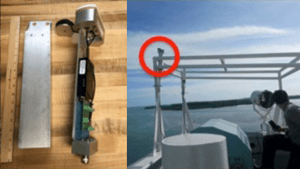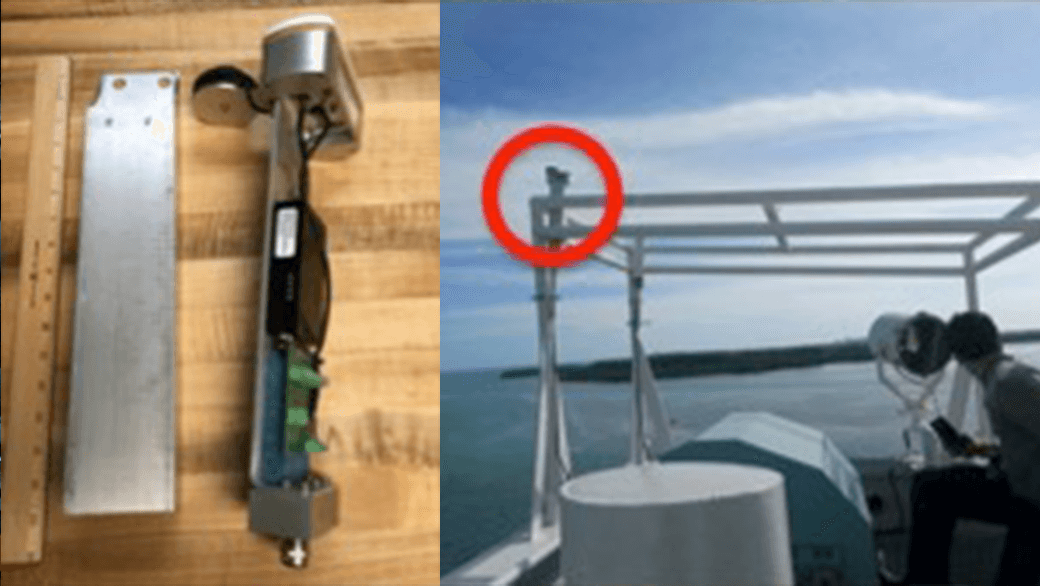Scientists and engineers from NOAA have successfully designed, built, and tested a new antenna system that dramatically increases data transmission reliability while drastically reducing operating costs. The new Iridium-based transmission system, developed by NOAA’s Atlantic Oceanographic & Meteorological Laboratory (AOML) & the Cooperative Institute for Marine & Atmospheric Studies (CIMAS), has no restrictions on data format or size, allowing data from various ocean and land-based observation platforms to be transmitted more reliably and at a fraction of the cost of the older Inmarsat-C platform. Since completion, the Iridium system has been adopted on a number of Expendable Bathythermographs (XBTs) observation transects and have been simultaneously tested and implemented in other AOML observing systems.
The development of this new system involved creating new transmission hardware and software. The system includes state of the art technologies combined with advanced algorithms to allow for the fast and stable transmission of digital data. Results from the initial tests carried out in 2013 were used to optimize the system and to reduce or eliminate connection drops and data loss. The new system began its transition to operational capacity in 2015 and is currently being used on all cargo ships with XBT observation transects operated by AOML and Scripps Oceanographic Institution. The adoption of this system has resulted in a 95% reduction of the average transmission cost per XBT profile.
NOAA deploys approximately 12,000 XBTs per year as part of its contribution to the global XBT Network, a component of the Global Ocean Observing System. XBTs are probes that measure temperature profiles to a depth of 800m. This global network consists of approximately 50 fixed transects that are repeated several times a year. Historically, the real-time transmission of this data was carried out using the Inmarsat-C satellite network, which was implemented in the early 2000s, and relies on twelve geostationary telecommunications satellites. The Inmarsat-C network is costlier and does not allow for the transmission of different data types.
Although originally developed for XBT observations, the new Iridium-based transmission system is capable of transmitting various types and amounts of data. Its applicability has been expanded to data transmissions for ThermoSalinoGraph (TSG), pCO2, and marine weather observations. Other global oceanographic observational platforms such as Argo floats and drifting buoys also use the Iridium network for data transmission, however these platforms use a protocol only suitable for smaller amounts of data. With the application of the new antenna system, which can transmit files of arbitrary size, this data can be transmitted at a lower cost and at a faster rate.
In addition to Iridium transmissions, the new system can be also be configured to transmit data over telephone landlines or computer networks, potentially decreasing many other operational costs. Future plans for the system include increasing its use along XBT transects run by other XBT partner institutions as well as its application to other types of real-time environmental data transmissions.
This work was funded by the Climate Observations Division of the NOAA Climate Program Office and by AOML, through the XBT Network and the Ship of Opportunity Program.

Originally Published in March 2015 by Shannon Jones
